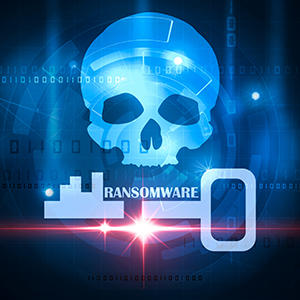What Is Ransomware Attack?
Despite the use of advanced security solutions, cyber threats are on the rise, crippling the critical services of even high-profile organizations. Among these threats, ransomware attacks are the most dangerous ones.

WannaCry ransomware attacks in May of 2017 is one of the most significant ransomware attack of all times. It had over 200,000 victims, infecting more than 300,000 computers.
Ransomware capitalize on the fear factor of the victims. In most cases of ransomware attacks, the victim’s computer gets infected through phishing emails or direct downloads. Once gaining control of the victim’s computer, the attacker (creator of ransomware) uses scare tactics for extorting money from the victim.
The scare tactics used by them includes preventing or restricting the victims from accessing their critical data files. Over the years, ransomware attacks have evolved into a highly profitable criminal business. Today, cybercriminals use sophisticated encryption methods, advanced payment options (usually in the form of crypto currencies) to avoid a crackdown by law enforcement.
Unlike many other types of cyber attacks, ransomware attacks notify the victim about the exploit, and it also gives instructions on how to recover from it (usually it demands payment for recovery).
How Ransomware Infects A Computer?
Ransomware infects a computer through various means such as through malicious email attachments, malicious links in shady websites. Most ransomware attacks are based on remote desktop protocol and other tactics that don’t rely on user interaction.
Users may inadvertently download ransomware when they visit compromised websites. Ransomware malware can also piggyback on other malicious software applications as a payload. Some ransomware variants are known to spread through email attachments from malicious emails or released by exploit kits onto vulnerable computers.
Once the ransomware gets executed, it can change the victim’s login credentials, encrypt files and folders on the victim’s device, as well as on other connected devices.
In the first case scenario (changing the login credentials), ransomware shows a full-screen image or notification on the infected system’s screen, which cannot be closed at the user’s will. It may also have the instructions on how users can pay for the ransom and get the decryption key.
In the second case scenario (encrypting files and folders), the ransomware malware prevents access to valuable files like documents and spreadsheets.
How To Protect Your Computer From Ransomware
#Backup Your Data Regularly
Make sure to back up important files on your computer on a cloud storage. This can save your data even if your computer gets infected with ransomware malware.
#Keep Your Computer Up-to-Date
Since ransomware malware exploits security vulnerabilities in software, it is critical for you to update your computer. Make sure to update your computer with regular patches and security updates.
The best way to protect your computer from ransomware is to keep your operating system clean and up-to-date by downloading regular security patches and updates. It is advisable to have a reputable antivirus program such as the Xcitium Antivirus installed on your computer.
If you are an enterprise user, it is advisable to use Xcitium Advanced Endpoint Protection (AEP). With its containment technology, Xcitium AEP can quickly contain malicious software across endpoints.
For more details about Xcitium Advanced Endpoint Protection, contact us at EnterpriseSolutions@comodo.com or +1 888-256-2608.
Related Sources:
Endpoint Detection
Endpoint Detection and Response
Discover Malware For Free


